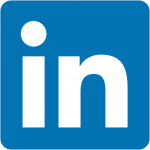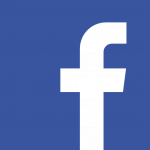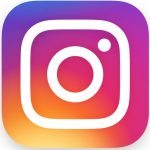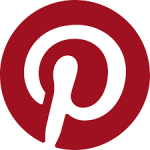
Social media is a fantastic way to put your business in the spotlight – providing you do it in the right way – but which social platform do you choose – or should you just hit them all?
This is all about your client – if you know who you’re aiming to reach, that will help you to decide which social platforms will work best for you. Also knowing who you want to talk to will also inform HOW you use your chosen platform too.
Let’s look at some of the big players.
 Ideal if you sell business-to-business (B2B), but it takes a lot more than just having a profile and posting the occasional comment.
Ideal if you sell business-to-business (B2B), but it takes a lot more than just having a profile and posting the occasional comment.
- Optimise your profile for your ideal client
- Have a content posting plan for both updates and articles
- Use the search function to find people in the companies you want to reach
- Join the groups where your target market are active (this is likely to be some trial and error, but persevere)
- Connect with existing and former clients and request they post testimonials (recommendations) on your profile.
LinkedIn advertising has not got a great reputation for success, but there is lots of engagement on the home page if you post good stuff, which often opens the door to useful relationships.
LinkedIn launched in 2003, and was bought by Microsoft in December 2016.
 Most people are in ‘social’ mode on Facebook, so, while there are tons of business pages the most successful businesses are those selling direct to the consumer (B2C). People do buy things on Facebook, but think gifts, learning and personal development, wedding-related things, sports equipment and self-help.
Most people are in ‘social’ mode on Facebook, so, while there are tons of business pages the most successful businesses are those selling direct to the consumer (B2C). People do buy things on Facebook, but think gifts, learning and personal development, wedding-related things, sports equipment and self-help.
That doesn’t mean that businesses that sell to other businesses don’t hang out on Facebook, but they often find it’s a great way to build their lists with Facebook ads, with a view to upselling via email later on.
The big plus is that Facebook ads can be highly targeted with a wide range of demographics so only the people who you want to see your ad will do so.
Facebook groups are also a good way to promote your business – with a higher level of engagement than LinkedIn, but don’t use them just to sell or people will vote with the ‘leave group’ button!
Messenger is the Facebook messaging system (and Facebook also owns WhatsApp, although, at the time of writing this wasn’t integrated into the Facebook offering).
 This is a highly visual platform, owned by Facebook. It’s all about images and short video clips. As a business tool it’s great to show off products and visual results from services.
This is a highly visual platform, owned by Facebook. It’s all about images and short video clips. As a business tool it’s great to show off products and visual results from services.
For instance, Joe Wicks (the Body Coach) used Instagram to build his hugely successful fitness and nutrition business, with before and after images and high speed recipe demos. His quirky personality came over loud and clear and gathered millions of followers.
It’s fairly random as a wide range of users are on Instagram, both personal and business. Think of it as a shop window, rather than the sales counter.
For businesses that are more service oriented, such as coaches, consultants and therapist, you’ll need to be creative in getting your message across. This might be using video testimonials or quotes presented in a visual format.
Instagram was launched in 2010 and acquired by Facebook in 2012. It can now be managed directly from your Facebook page, which makes life easier for people working on a desktop/laptop rather than a smartphone.
 Pinterest is also a highly visual platform, but the difference between Pinterest and Instagram is that, on Pinterest images are sorted by subject, rather than just by the user. This means that it’s easy to compare similar items and Pinterest has become a very popular platform for people to check out products.
Pinterest is also a highly visual platform, but the difference between Pinterest and Instagram is that, on Pinterest images are sorted by subject, rather than just by the user. This means that it’s easy to compare similar items and Pinterest has become a very popular platform for people to check out products.
Although the concept is simple, based on digitally pinning images to a board around a specific subject, each image has the facility to add up to 500 characters of content and a specific web link. This gives it the edge of Instagram, where words are few and the only link is the one you put on your profile.
The stats indicate that Pinterest sales outstrip Facebook by about 4:1. Launched in 2009, currently Pinterest is owned independently of other social media/internet companies.
YouTube
 Although YouTube is a video library, it’s also the second most used search engine after Google. The difference being that when you search on Google, you leave Google to go where the link takes you. When you search on YouTube your link takes you to somewhere on the YouTube platform.
Although YouTube is a video library, it’s also the second most used search engine after Google. The difference being that when you search on Google, you leave Google to go where the link takes you. When you search on YouTube your link takes you to somewhere on the YouTube platform.
If you’ve set up your YouTube channel well, it can be a powerful marketing tool, promoting more of your own content.
It’s an opportunity to share your knowledge and expertise to help your viewer in some way.
Again it’s important to plan your content and create videos that represent your business positively. You can use it for training, product launches, information, video blogs and much more.
YouTube was launched early in 2005 and bought by Google late in 2006.
Of course, there are other popular social platforms, such as Snapchat and TikTok, but they are still to develop the level of firepower that the well-established networks give business owners.
